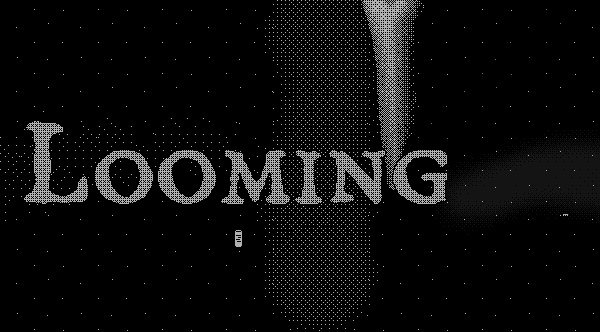

Mantises were fixed onto a stand with the help of the component fixed onto their backs, which fit into a corresponding component on the stand. The refresh rate of the monitor was 60 Hz.

The monitor had dimensions of 51.8×32.4 cm (1920×1200 pixels) and a screen resolution of 37 pixels cm −1. MATERIALS AND METHODSĪll stimuli were presented on a Dell U2413 LED monitor with custom written programs in MATLAB using the Psychophysics toolbox ( Brainard, 1997 Kleiner et al., 2007).
Define looming series#
Therefore, we ran a series of experiments with mantises of the species Sphodromantis lineola, aiming to uncover which cues they use to detect the motion of prey in depth, and how these are combined. Our recently described insect 3D cinema allows us to manipulate stereoscopic cues freely ( Nityananda et al., 2016b), enabling us to investigate this question. It is thus also possible that they exploit stereoscopic cues to motion-in-depth. They use this to judge prey distance ( Nityananda et al., 2016b Rossel, 1983) and also to modulate their preference for prey size ( Nityananda et al., 2016a). This is supported by the fact that praying mantises are the only invertebrates known to have stereoscopic vision. This suggests that mantises use looming to avoid predators and stereopsis to catch prey. In addition, looming has been studied in the context of defensive responses and has not been implicated in prey capture so far. For motion-in-depth specifically, their sensitivity to looming has been studied in some detail ( Sato and Yamawaki, 2014 Yamawaki, 2011), but other cues have not been examined. Mantises are sensitive to multiple cues to depth including stereoscopic cues and motion parallax owing to self-motion ( Nityananda et al., 2016b Poteser and Kral, 1995 Rossel, 1983). When it comes to predation, they have an especially clear behaviour indicating their perception of depth – a predatory strike that involves a rapid extension of their forelimbs to capture prey, released only when prey is within catch range. Praying mantises are particularly interesting animals to consider. Much less is known about how insects, with their far simpler nervous systems, combine multiple cues and reconcile conflicts. The relative strength of the two cues depends on the precise stimulus and task for example, IOVDs dominate for stimuli with high speeds covering wide areas of the visual field, whereas changing disparity cues dominate for lower speeds in the central visual field ( Cormack et al., 2017 Czuba et al., 2011 Parker et al., 1996). These IOVDs have also been shown in humans to contribute to judgements of motion-in-depth ( Shioiri et al., 2000). For example, an object approaching along the midline would have a rightward velocity in the left eye and a leftward velocity in the right eye. Approaching objects would also have differing velocities in each eye. This changing disparity cue suffices to create a perception of motion-in-depth for human observers, even in the absence of other cues ( Cumming and Parker, 1994). Thus as an object approaches, the disparity between the two views changes.

This disparity reflects the distance to an object. Stereoscopic disparity refers to the difference in the position of an object as seen by the two eyes. Two of the motion-in-depth cues that have received the most attention in humans are binocular: changing disparity and interocular velocity differences (IOVDs) ( Cormack et al., 2017). We conclude that mantises use stereopsis to detect depth but not motion-in-depth, which is detected via looming.

Approach indicated by radial motion of a texture or expansion of a motion-defined edge, or by stereoscopic cues, all failed to elicit increased striking. Our results show that motion-in-depth does increase the probability of mantis strikes but only for the classic looming stimulus, an expanding luminance edge. We used our 3D insect cinema in a series of experiments to investigate the role of the stereoscopic cues mentioned above, as well as looming, in the perception of motion-in-depth during predatory strikes by the praying mantis Sphodromantis lineola. Although these have been studied in detail in humans, only looming responses have been well characterized in insects and we know nothing about the role of stereoscopic cues and how they might interact with looming cues. This can be achieved using several cues, including binocular stereoscopic cues such as changing disparity and interocular velocity differences, and monocular cues such as looming. Perceiving motion-in-depth is essential to detecting approaching or receding objects, predators and prey.


 0 kommentar(er)
0 kommentar(er)
